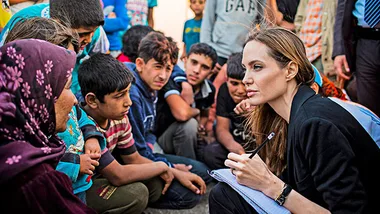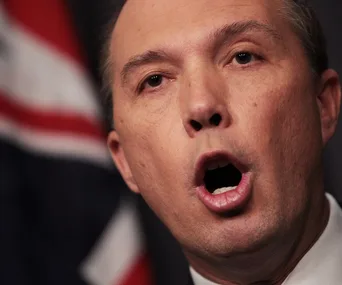Abed is a quiet, thoughtful and calm 11-year-old boy. In a family of ten, those attributes are greatly appreciated by his mum, especially when the bickering starts amongst the kids.
Until 2014, Abed and his large family lived in rural Aleppo, Syria – a country in the midst of war since 2011. That means, if we ignore the tensions leading up to the Arab Spring, Abed has known nothing but war since he was just five years old.
Since then, more than 465,000 Syrians have been killed, over a million injured and over 12 million – half the country’s population – have been forcibly displaced from their homes. Abed’s family fled to Lebanon in 2014 – all ten in one car.
They first arrived to Horsh Tabet before moving to Sabra, right next to the garbage landfill under a roof dripping water. Soon after, they moved to a locality characterised by its nomadic, stateless population. Their roof still dripped, but now they faced even more distressing challenges. Finally, they landed in the overcrowded Shatila refugee camp which has swollen with Syrian asylum-seekers over the last seven years.
We are in the midst of a global humanitarian crisis but many countries, Australia included, appear to be turning a blind eye to the suffering. The world currently has over 65 million refugees, asylum-seekers and internally displaced people – the highest levels of displacement on record.
Yesterday, 22 persecuted Afghanis, Pakistanis and stateless Rohingya refugees were flown to Los Angeles from Nauru to be resettled by the American government – a mere drop in the ocean, but one the Australian government insists would cause us to drown.
The term “illegal immigrant” has been lodged firmly in public discourse, but is it fair? The Australian government, like all UN member states, actually has a fundamental obligation to protect and find a humanitarian solution for asylum seekers.
Unsurprisingly, not many find offshore detention centres with woefully inadequate mental health support a “humanitarian solution”.
Last year, UNHCR urged the Australian government to work with PNG authorities to “immediately de-escalate an increasingly tense and unstable situation”.
“Australia remains responsible for the well-being of all those moved to Papua New Guinea,” they said.
“UNHCR urges Australia to take responsibility and provide protection and safety to these vulnerable human beings.”
Maybe that’s where we’re going wrong; instead of susceptible, terrified people, refugees have mutated into faceless statistics. Of the 65.6 million people who have been forced from their homes, 22.5 million are refugees and more than half of those are children. While kids are arguably more resilient than many, no one’s formation years should be shrouded by a pervasive and omnipresent sense of dread.
While conflict and violence, sadly, seem to be a part of human reality, hatred, violence and fear don’t have to be. NGO International Alert and The Body Shop want to prove this by helping kids in refugee camps find peace through play.
When Abed was confronted with the immense overpopulation of Shatila, he was encouraged to join Peace Play sessions – a project which uses recreational and creative activities to help refugee children deal with trauma and to understand their experiences of conflict.
This was a young boy who hadn’t known peace or true stability for seven years – more than half of his life – and his confidence with others was severely shaken.
“At first, he wouldn’t interact at all,” one of the facilitator’s explained to Now To Love.
“During the “check-in” activity- where the children make a circle at beginning of the session to say how their week has been and how they are feeling at that moment – Abed would not participate; he would only blush and scratch his eyes, without replying or making any eye contact with others.”
This behaviour continued for four more weeks until he started using very light communication. Then he started to laugh and joke with other kids in the session and, slowly, he started drawing and enjoying himself.
Eventually, Abed and his friends chose to do a presentation on the rights of children, something that cut close to the bone for all of them.
They painted a picture embodying the importance of play and education – activities inevitably hampered by instability and war.

The painting highlights a devastating dichotomy experienced by young refugees. For all its charmingly childish characteristics, it’s impossible to ignore the tears streaming down his face and gagged mouth in the self-portrait.
However, when it came to presenting the artwork to the group, facilitators were blown away by Abed’s progress.
“Abed was the group’s representative,” the facilitator told Now To Love. “It was surprising that he was able to stand in front of a large group of people including all the children’s families, and talk with confidence.”
The dramatic change in his demeanour wasn’t lost on his mother, Faiza.
“He used to be very shy – he would go into another room when someone visited the home. Now he has started to sit with us and chat. His father was also very surprised at the changes in his son. Abed also become very peaceful, even when his siblings fight with him he doesn’t fight back,” she divulged to Now To Love.
“After engaging in the Peace Play sessions he started to become happier. He is not shy anymore – he even made friends.”
The dramatic change in Abed prove just how desperately these kids need stability, laughter and experiences not tainted by trauma, so how is Australia going to help?
The 2016 expenditure on peace building was equivalent to less than one per cent of the cost of war while spendings on defence absolutely dominated the amount spent on development and humanitarian aid – figures that don’t feed into some politicians’ claims we can’t afford to help.
“When you hear those statistics there really is no excuse for any government not to focus more spending on peace building and conflict resolution,” protested Jessie Macneil-Brown, The Body Shop’s International Campaign and & Corporate Responsibility Manager.
“Our partners International Alert tell us that the number of conflicts in the world is increasing and we have more refugees now than in any time in history – governments should be doing more to prevent conflict and to build peace in communities already affected.”
Instead, late last year, our government rejected New Zealand’s offer to home the men on Manus Island – the ones who’d been robbed of water in a place averaging 31 degrees every day and forced to dig wells.
“It’s so incredibly disappointing and frustrating that the vote on the New Zealand refugee deal failed by just one vote, especially just one week after passing marriage equality. How can our MPs be so cruel to people effected by war, to vulnerable people seeking asylum?” Jessie asked.
“Asylum seekers are some of the most vulnerable people in the world. If another country, like New Zealand wants to help them – why on earth wouldn’t we want to accept that assistance?”
That decision is far from Australia’s most controversial, and internationally condemned, refugee policy.
“I find it incredibly alarming and inhumane that a government can defend a policy that encourages refugees to sever ties with their families – including relinquishing all rights to ever see their children – in order to be considered for resettlement in the US,” Jessie told Now To Love.
“But it’s not just the Australian government who is shirking its responsibilities to child refugees. The UK government is taking a very small number of refugees and has reneged on its commitments to accept unaccompanied child refugees.
“The US government created havoc last year with their policy changes, significantly lowering the number of refugees able to seek asylum in their country. We need to call on all of the richest governments to do more to support refugees – the Australian government included.”
Nearly 20 people are forcibly displaced every minute. That includes families, the elderly and children just like Abed. Isn’t it time we stepped up, Australia?





